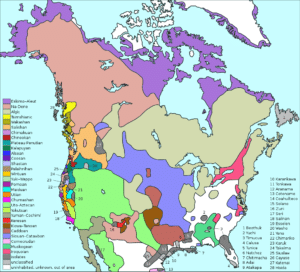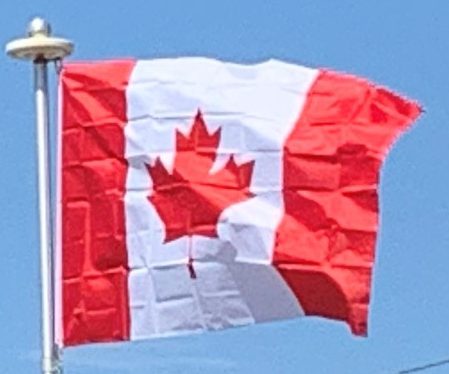In 1535, indigenous inhabitants of the present-day Quebec City region used the word to direct French explorer Jacques Cartier to the village of Stadacona. Cartier later used the word Canada to refer not only to that particular village but to the entire area subject to Donnacona (the chief at Stadacona); by 1545, European books and maps had begun referring to this small region along the Saint Lawrence River as Canada.
History:
Early History:
The first inhabitants of North America are generally hypothesized to have migrated from Siberia by way of the Bering land bridge and arrived at least 14,000 years ago. The Paleo-Indian archaeological sites at Old Crow Flats and Bluefish Caves are two of the oldest sites of human habitation in Canada. The characteristics of Canadian indigenous societies included permanent settlements, agriculture, complex societal hierarchies, and trading networks. Some of these cultures had collapsed by the time European explorers arrived in the late 15th and early 16th centuries and have only been discovered through archaeological investigations.

The indigenous population at the time of the first European settlements is estimated to have been between 200,000 and two million, with a figure of 500,000 accepted by Canada’s Royal Commission on Aboriginal Peoples. As a consequence of European colonization, the population of Canada’s indigenous peoples declined by forty to eighty percent, and several First Nations, such as the Beothuk, disappeared. The decline is attributed to several causes, including the transfer of European diseases, such as influenza, measles, and smallpox to which they had no natural immunity, conflicts over the fur trade, conflicts with the colonial authorities and settlers, and the loss of indigenous lands to settlers and the subsequent collapse of several nations’ self-sufficiency.
Although not without conflict, European Canadians’ early interactions with First Nations and Inuit populations were relatively peaceful. First Nations and Métis peoples played a critical part in the development of European colonies in Canada, particularly for their role in assisting European coureur des bois and voyageurs in the exploration of the continent during the North American fur trade. The Crown and indigenous peoples began interactions during the European colonization period, though the Inuit, in general, had more limited interaction with European settlers. However, from the late 18th century, European Canadians encouraged indigenous peoples to assimilate into their own culture. These attempts reached a climax in the late 19th and early 20th centuries with forced integration and relocation. A period of redress is underway, which started with the appointment of the Truth and Reconciliation Commission of Canada by the Government of Canada in 2008.
European Colonization:
In about 1000 CE, the Norse built a small encampment that only lasted a few years at L’Anse aux Meadows on the northern tip of Newfoundland. No further European exploration occurred until 1497, when Italian seafarer John Cabot explored and claimed Canada’s Atlantic coast in the name of King Henry VII of England. Then Basque and Portuguese mariners established seasonal whaling and fishing outposts along the Atlantic coast in the early 16th century. In 1534, French explorer Jacques Cartier explored the Gulf of Saint Lawrence where, on July 24, he planted a 33 foot cross bearing the words “Long Live the King of France” and took possession of the territory New France in the name of King Francis I. In general the settlements appear to have been seasonal and short-lived, possibly due to the similarity of outputs producible in Scandinavia and northern Canada and the problems of navigating trade routes at that time.
